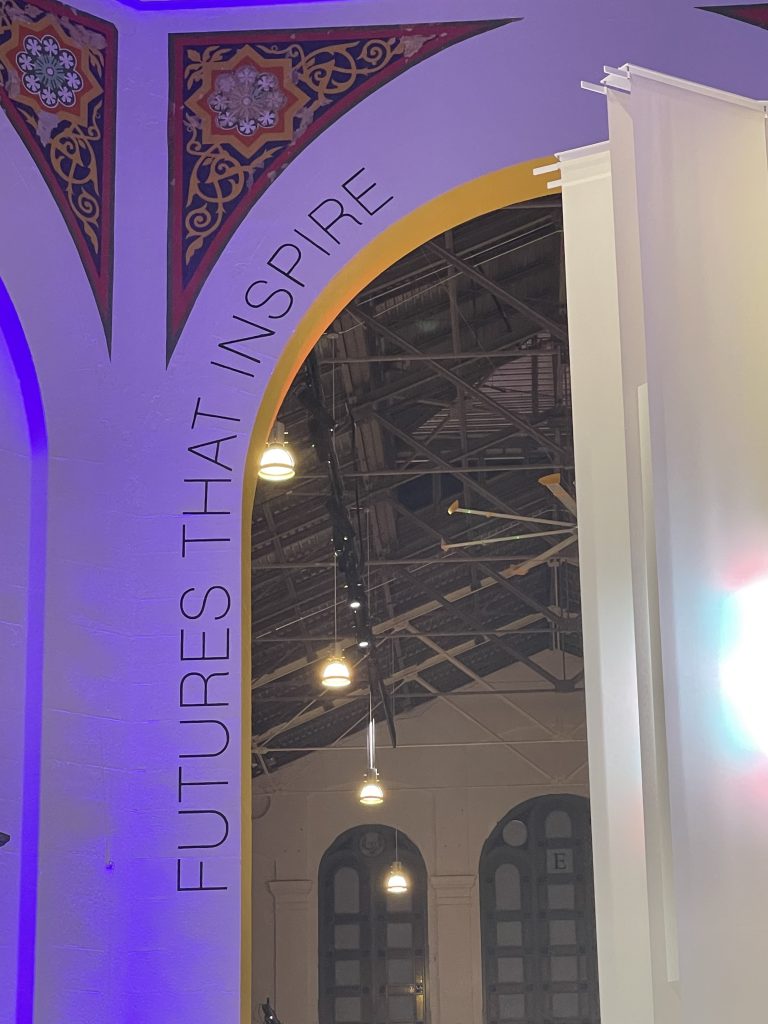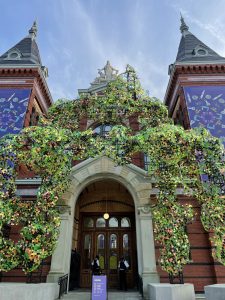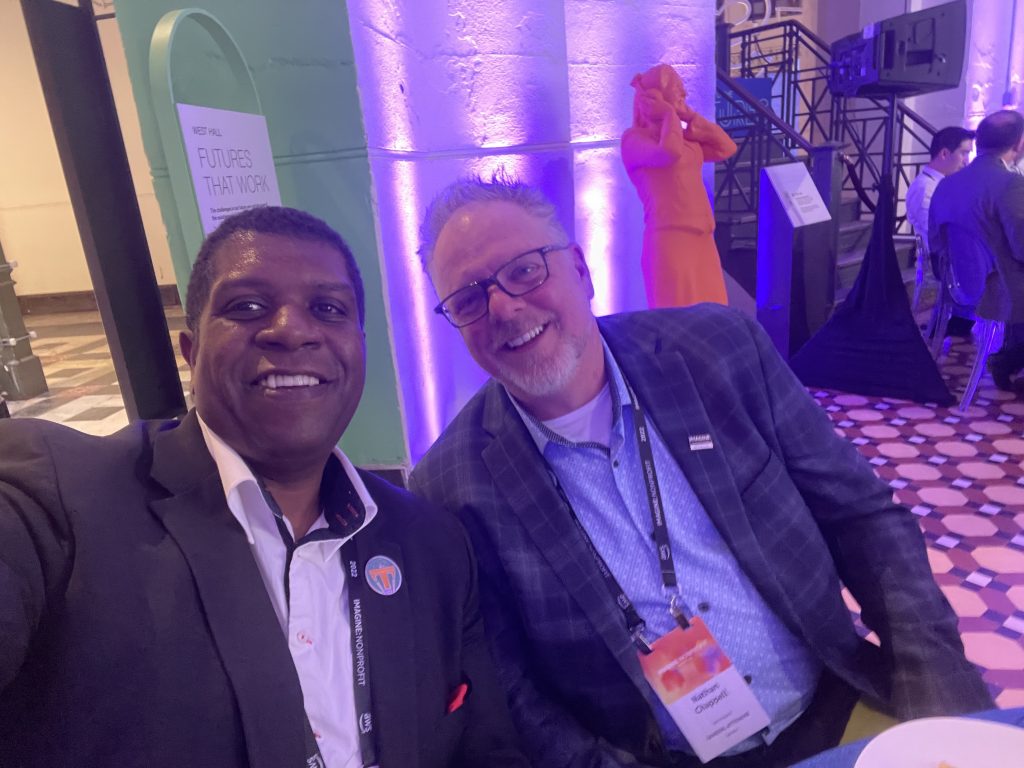
Nonprofits are a critical element of our nation’s infrastructure. In many cases, nonprofits and NGOs bridge the gap between government support agencies and the people who need special services. Some nonprofits make a direct impact on citizens in times of dire need. Others augment the capabilities of government agencies by providing expertise those agencies can’t acquire. I spent the last two days learning more about how nonprofits are leveraging technology to make a difference at the IMAGINE: NONPROFIT Conference hosted by Amazon Web Services (AWS) at the Ronald Reagan International Trade Center in Washington, DC.
We live in an exciting time and in a dynamic era. The IMAGINE conference’s aim was to share information on the positive possibilities technology can bring to nonprofits as well as educate their leaders on AWS technology and support. AWS delivered. This conference wasn’t what I was expecting even as an attendee who is leading my company’s AWS partnership efforts. I was expecting more of the same techno-babble and cheerleading you’d expect from a technology provider, but what was really shared were the ways technology can bring about positive change in our world. With nonprofits being a leading driver using technology to bring about that change.
I often think about what we can do, and think about how we can accomplish the possible versus dwelling on what we can’t do. This conference didn’t disappoint.
My Day 1 started with me having a one-on-one with my AWS rep — now two reps — about our product roadmap. AWS has been extremely helpful with getting our current architecture from on-premises to the cloud, and have provided a superior level of support.
DC chef, Jose’ Andres was supposed to be in-person to deliver the keynote address, but wasn’t present for the conference. Instead, his address recorded from Ukrainian-Polish border was more emotional and powerfully inspirational. Andres founded World Central Kitchen, a non-profit devoted to providing meals to people in the wake of disasters. He implored non-profit leaders to work together and that the world needs more collaboration and fewer siloed efforts to deal with global problems. Jose Andres is known for his warm heart, philanthropy, and service and he’s just a solidly, decent dude. I left his keynote with new vigor as I think about how the technology we build can better impact people’s lives. I connected with the founder of Do Right Enterprises, Danna Lennon-Thomas, and Hope One Source’s, Tim Underwood. We discussed social determinants of health (SDOH) and how data science can bring better health outcomes.
The rest of my Day 1 afternoon was filled with meetings, and listening to how the American Red Cross bridges the gap between government and individuals when agencies can’t provide immediate needs like supplying houses after the California wild fires. The first day was capped up with a dynamic and amazing presentation on Emotional Intelligence by Richard Hua. Non-profits deal in messy business and it can be difficult to keep on going and avoiding burnout. Rich provided actionable information and insights into working with people and maintaining grit in a difficult time. Tips for managing teams, accepting criticism, and communicating ideas effectively were shared with the crowd. After, a block breathing exercise I opened my eyes and exclaimed to the audience I felt, frisky!

I finished the night off an exec dinner hosted by AWS and sponsored by Salesforce at the Smithsonian’s Arts and Industries Building. Arts and Industries sits right next to the castle and it’s an amazing place. If you’re ever on the Mall and haven’t been there, go now. AI-powered mood detectors, and living sculptures were part of the exhibits on the floor. The building reopened on Smithsonian’s 175th anniversary in 2021 and served as the launch pad for the Smithsonian’s exhibits for decades. It’s a great visit, you should go. Drinking way too much wine, and talking way too much trash I met Donor Source’s Nathan Chappell, a badass custom pen-making data scientist. Which leads me into Day 2.

Out of all of the presentations given on Day 2, Nathan Chappell’s presentation on transforming how the world perceives philanthropy was the most impactful for me. Donor Source is using data science and AI to change people’s ideas about data science. Currently, the world approaches the same white guys again and again, over and over…again seeking donations for non-profit programs and projects. American generosity is trending downward and Nathan’s work is trying to reverse that trend. He’s using data and sophisticated modeling to understand donor behavior, and help all of us participate in philanthropic pursuits. His work operates with the idea that we all want to give and contribute for causes, but we’re not always inclined to. He’s using data science to understand who, where, and how much to ask potential donors expanding the donor population. I think it’s great stuff. And, he makes awesome pens and I’m going to put in a request.
Harmony Labs’ Brian Waniewski delivered a great talk on media and their work on building media systems and tools to promote democratic culture. Little ‘d’. Brian and his team are modeling sentiment and attitudes of the content we all consume. We’ve all come to understand that algorithms and software have allowed us to create filter bubbles. Harmony’s tools are trying to change that course and allow more cross pollination of ideas through awareness. Intuitively, we all know media has skewed more negative. Harmony Labs’ Narrative Observatory is trying to change that push.
It wouldn’t be an AWS conference if AWS didn’t promote their AI stack and tools like Sagemaker. A series of quick presentations rounded out the mid-day session. A company called Rallypoint to identify early signs of self-harm and suicide risk among veterans. Their software has led to many successful interventions. WWD-Indonesia is using satellite, GPS, and image data to predict the migratory patterns of orangutans to preserve their habitats. The space geek in me appreciated the work AWS is doing to help construction of the Giant Magellan Telescope. The CETI project is working with cryptographers, mathematicians, biologists, and AWS to understand and communicate whale song. And in a mission after my own heart, PATH is using data analytics to pattern match early signs of family homelessness to drive better SDOH outcomes.
AWS are masters of the quick hit conference. In two days, they packed a plethora of how-tos, talks, and inspirational sessions for a captive, majority non-technical audience. I was feted, amazed, and inspired to take this information back to the non-profit I work for and pursue better human outcomes. If you work for a non-profit and know you need a technical strategy, but don’t know where to start, slide over to AWS for Nonprofits and start a conversation today.
